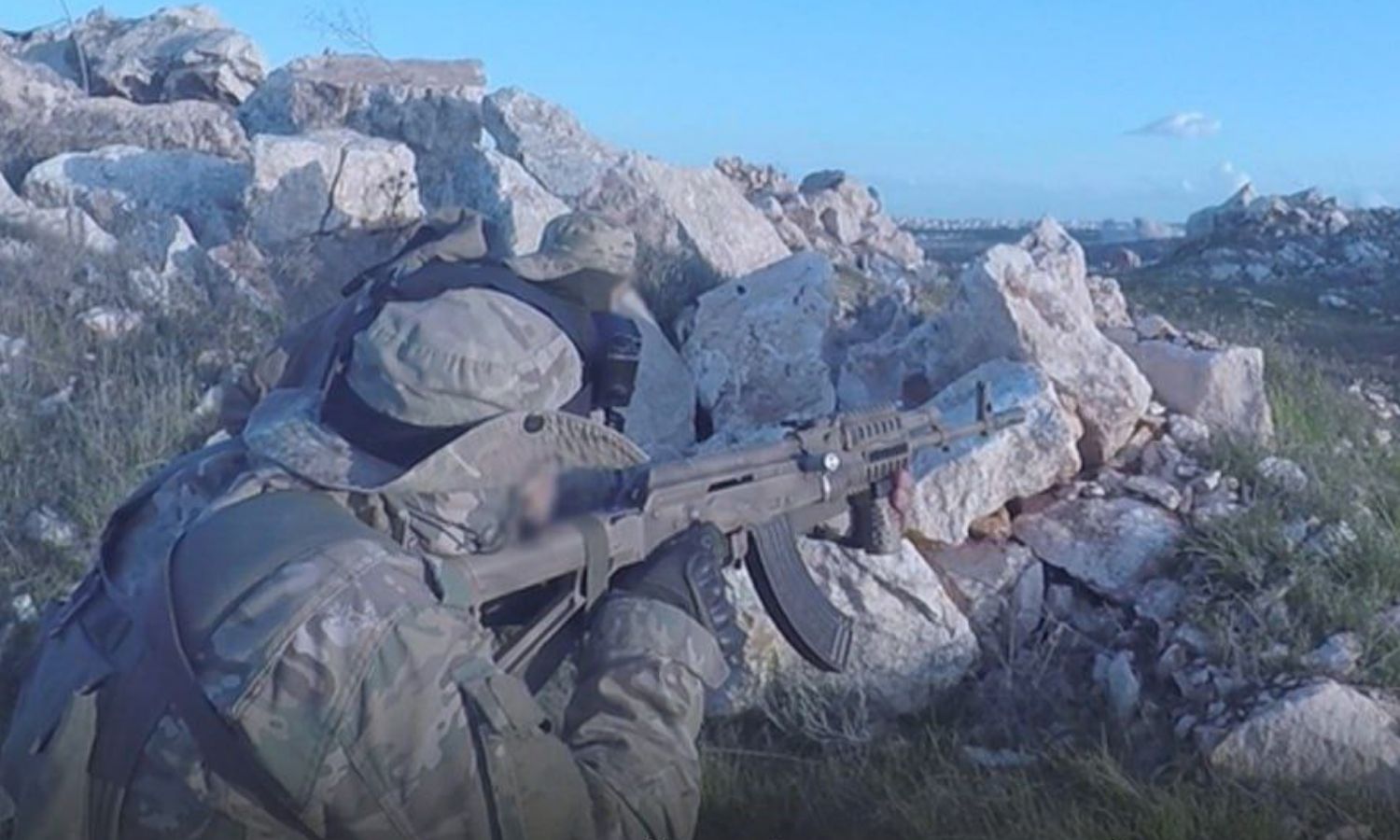



The frequency of qualitative “inghimasi” shock offensive operations carried out by Hayat Tahrir al-Sham (HTS) has increased during the past two weeks, after months of cessation, against the Syrian regime forces near the front lines between them.
The operations came after several strikes by the regime on sites close to the front lines, using suicide drones.
The Syria Civil Defence teams documented 13 attacks with explosive-laden suicide drones by the regime forces, Russia, and the Iranian militias in northwest Syria, since the beginning of this year until February 22.
The operations also coincided with popular protests demanding “the whitening of prisons” and “the overthrow of al-Jolani” in various cities and neighborhoods in the province of Idlib, which is under HTS’ military control.
The rise in “inghimasi” operations is usually associated with internal or external messages that the HTS tries to send.
The military commander, Jalal al-Din al-Hamwi, stated to the Military Media platform affiliated with the HTS on the 8th of the current March, that Tahrir al-Sham has executed four quality operations that targeted military sites and advanced ambushes of al-Assad’s forces on the front of Qubtan al-Jabal, west of Aleppo, and three operations on the coastal front north of Latakia.
The Sniping Brigades in al-Fath al-Mubin sniped 11 elements of al-Assad’s forces, spread over several fronts, including the front of Saraqib east of Idlib, the al-Ghab plain northeast of Hama, Kunba north of Latakia, and Jabal al-Zawiya south of Idlib.
Al-Fath al-Mubin managed to destroy two tanks, a BMP vehicle, and a trucks for the regime’s forces on the coastal fronts, and Jabal al-Zawiya and the western countryside of Aleppo, resulting in a complete group between dead and injured on the Hantonin front south of Idlib, following the targeting with the right weapon, according to the statement.
It also targeted, with rocket launchers, the positions, gatherings, and barracks of the regime forces, in the city of Kafr Nabl and the village of al-Jardadi, south of Idlib, achieving “confirmed” hits, and a mortar position of the regime was destroyed by mortar shells in the village of Kafr Batikh, east of the province.
The latest of the quality operations carried out by Tahrir al-Sham was at the axis of At-Tuffahiya in the countryside of Latakia by an inghimasi from the Jaafar bin Abi Talib brigade, and among the participating brigades in the operations were also the Abdel Rahman bin Awf brigade, and the Abi Ubaidah bin al-Jarrah brigade.
The HTS did not announce any casualties or wounded elements in its ranks and merely mentioned the achievements of the operations.
On the other hand, media focus was less on the regime’s side, unlike the media affiliated with Tahrir al-Sham.
The Syrian regime’s Ministry of Defense published a statement, on March 7 via Facebook, in which it mentioned that it clashed with a “terrorist” group belonging to what is called “Jabhat al-Nusra” in the southern countryside of Idlib, while it tried to infiltrate and attack one of their military points.
The statement stated that the regime’s forces inflicted casualties among the group members, killed and wounded them, and arrested one of its elements.
On the 3rd of the same month, the ministry stated through a statement that it confronted a “terrorist” group in the northern countryside of Latakia, while it tried to infiltrate one of the military positions, where they were able to kill and wound most of the elements of the group, and pulled three of their bodies, the statement came without publishing any photos of the dead.
A researcher at the Omran for Strategic Studies center, Nawar Shaaban, explained to Enab Baladi that Tahrir al-Sham is no longer just a military group with missions within an area under attack but has become a military arm attached to an administrative body and a project for expansion and survival.
What we witness simultaneously with these operations is an administrative malfunction within the HTS, whether on the security or structural level.
Shaaban mentioned that the reason for these operations’ rise came due to the HTS’ need to carry out activities to stir the general scene internally and externally, to divert attention from the issues within it to the fronts, especially after the departure of Abu Maria al-Qahtani and people’s anticipation of what his role in the HTS will be, hence they try to benefit from the drone strikes (suicide drones) and respond to them, and the increase in “inghimasi” operations and their media promotion.
According to the researcher, the coming period may witness the use of “VBIEDs” (car bombs).
The HTS released a member of the Shura Council and first-line leader, Abu Maria al-Qahtani, after detaining him for 6 months on the background of the “treason file.”
The Judicial Committee in charge of investigating the case said that al-Qahtani is innocent of the charge of “treason,” as the evidence, for which he was arrested, turned out to be invalid, as he was detained based on testimonies received from detainees on the same charge.
Against the backdrop of ongoing protests for about two weeks, the Salvation Government (the political umbrella for the HTS) announced a series of reforms, including a general amnesty under terms and exceptions, and the formation of a judicial committee to look into the rights of those released, in addition to committees to listen to residents in each area, and the cancellation of building fees and waiver of part of them according to conditions.
if you think the article contain wrong information or you have additional details Send Correction